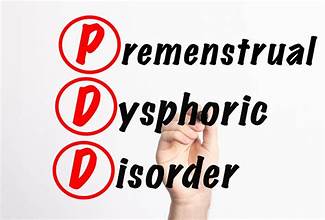
Have you ever felt that your monthly premenstrual symptoms are causing you more than the usual discomfort? Sometimes, what seems like severe premenstrual syndrome (PMS) might be something more intense, known as premenstrual dysphoric disorder (PMDD). Having a clear idea about your condition can help you get the right support and treatment.
What Is PMDD?
Premenstrual dysphoric disorder (PMDD) is like PMS, but the symptoms are more severe and can deeply impact your ability to function. PMDD affects about 3-8% of women in their reproductive years. The emotional and physical symptoms can be so intense that they interfere with your work, relationships, and overall quality of life.
What Is PMS?
Premenstrual syndrome (PMS) affects many women a week or two before their period starts. During PMS, symptoms like bloating, mood swings, headaches, and fatigue are common. For most, these symptoms are manageable and don’t disrupt daily life significantly.
What Are The Symptoms: PMS vs. PMDD?
PMS (Premenstrual Syndrome) and PMDD (Premenstrual Dysphoric Disorder) share several symptoms, but the intensity and impact on daily life are what set them apart.
Common Symptoms of PMS
PMS affects many women and includes a variety of symptoms that might make you feel uncomfortable a week or two before your period begins. These symptoms include:
- Physical discomforts like bloating, mild cramps, breast tenderness, and headaches.
- Mood changes, such as feeling sad, irritable, or anxious.
- Fatigue or feeling unusually tired.
- Appetite changes, including food cravings, especially for sweets or salty foods.
These symptoms are manageable and don’t significantly interfere with everyday activities. You might feel off but can still go about your daily routine, work, and interact with others without much trouble.
Symptoms of PMDD
PMDD, on the other hand, involves similar symptoms that are much more intense and debilitating. Here’s how PMDD symptoms can affect you:
- Emotional symptoms are severe, including deep sadness or despair, feelings of hopelessness, intense anger, irritability, and anxiety levels that are much higher than usual. Some women might even experience panic attacks or thoughts of self-harm.
- Physical symptoms of PMDD are also more intense, like very painful cramps that might feel unbearable, extreme fatigue that interferes with your ability to function, and significant bloating or weight gain.
The impact of PMDD on life is substantial. These severe symptoms can prevent you from going to work, attending social activities, or maintaining normal relationships. It feels like these symptoms take over your life for part of each month.
If your symptoms are so strong that they stop you from living your life normally, it might be PMDD. Recognizing this is essential for seeking the right treatment and support.
Causes of PMDD
The exact causes of PMDD aren’t fully understood, but it’s believed to involve a combination of hormonal changes, genetic factors, and brain chemistry. Unlike PMS, PMDD is linked more closely to the way your body reacts to hormone fluctuations rather than the fluctuations themselves.
How Is PMDD Diagnosed?
Unfortunately, there are no specific tests for PMDD. Diagnosis involves tracking your symptoms over a couple of menstrual cycles. A doctor will generally ask you to note when your symptoms occur, their intensity, and how they impact your life. The key to a PMDD diagnosis is the significant disruption to your daily life and mood-related symptoms.
Treatment Options for PMDD
If you’re suffering from PMDD, managing PMDD becomes necessary. It may require a combination of lifestyle adjustments, medication, and therapy to help you feel better:
- Lifestyle Changes: Regular exercise, a healthy diet, and sufficient sleep can help mitigate some symptoms and make you feel better. Reducing stress through yoga, meditation, or other relaxation techniques can also be beneficial.
- Medication: For many women, antidepressants known as SSRIs (selective serotonin reuptake inhibitors) are effective. Hormonal contraceptives may also help by regulating hormonal cycles.
- Counseling: If you’re still not feeling better, talking to a therapist can provide great support. Your therapist may recommend Cognitive-behavioral therapy (CBT), which is particularly effective in managing the emotional symptoms of PMDD.
Living with PMDD
It’s understandable that living with PMDD can feel isolating, but you’re not alone. Many women experience this, and acknowledging your symptoms is the first step towards getting better. Support groups and online forums can also provide comfort and advice from those who understand what you’re going through.
Wrapping Up
If you suspect your symptoms may be more than just PMS, it’s important to discuss them with your doctor. Be it PMS or PMDD, you deserve quality care that helps you live your life to the fullest. So, if you feel like your body’s telling you something more, remember to seek professional help and avail yourself of the quality support that’s accessible every step of the way.





